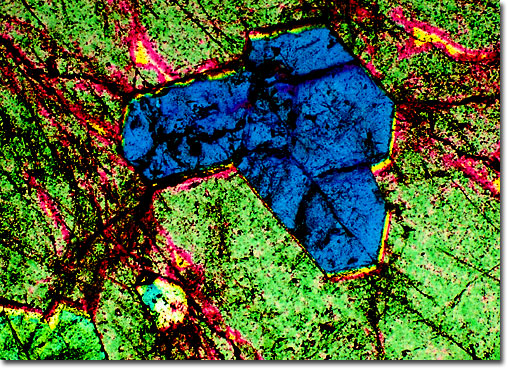Aquamarine
|
Aquamarine is one of several common gemstones belonging to the beryl mineral group. The name is derived from the Latin phrase "water of the sea", an accurate description of the gemstone's color, which ranges from a pale green to blue. This color is caused by trace amounts of iron that permeate the crystalline structure. The blue variety is the most valuable and greenish stones are sometimes changed to the highly prized blue shade by heating them in an electric furnace to 842° F (450° C). Brazil is the main source of aquamarine gemstones, although other locations where the mineral occurs include Zimbabwe, South Africa, Namibia, and the United States. Beryl crystals are some of the most well-known and prized gems that occur in nature, and include emerald, heliodor, and morganite, as well as aquamarine. Before 1925, gemstones were the primary use for beryl. Since then, beryl has become an important source of the element beryllium, formerly known as glucinium, a metal with a variety of modern commercial uses, particularly in manufacturing metal alloys. Enormous crystal masses, as large as 243 pounds (110 kilograms), have been discovered at some sites, and exquisite gems weighing two thousand carats or more have been cut from these formations. Unlike emerald, aquamarines are often completely flawless; an aquamarine gemstone with a visible flaw is rarely seen. However, the beautiful color of an aquamarine may fade upon prolonged exposure to light. The abundance of naturally occurring aquamarine makes it affordable, more so than synthetic aquamarines, which are expensive and difficult to manufacture. Synthetic blue spinel, another mineral, is easy and inexpensive to produce, and it is often mistakenly sold as "Synthetic Aquamarine." Many gem scholars agree that the tradition of birthstones arose from the Breastplate of Aaron described in the Bible (Exodus 28, 15-30). The breastplate was a ceremonial religious garment set with twelve gemstones that represented the twelve tribes of Israel and corresponded with the twelve signs of the zodiac and the twelve months of the year. There are many different birthstone lists, however, and some argue that they should be assigned by astrological sign and not month. Aquamarine is the birthstone for March and the zodiac sign Pisces. |
© 1995-2025 by Michael W. Davidson and The Florida State University. All Rights Reserved. No images, graphics, software, scripts, or applets may be reproduced or used in any manner without permission from the copyright holders. Use of this website means you agree to all of the Legal Terms and Conditions set forth by the owners.
This website is maintained by our
|
